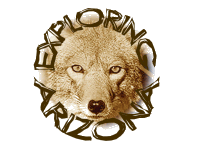Introduction
Coyotes are one of the most commonly encountered animals in Arizona, and they are often seen in urban and suburban areas as well as rural environments. For first-time visitors and residents to Arizona, it's important to understand the behavior and habits of coyotes to ensure both your safety and the safety of these animals.
Coyotes are members of the dog family and are typically smaller than their close relatives, wolves. They are known for their distinctive howls and yips, which can often be heard at night. Coyotes are omnivores and have a varied diet that includes small mammals, birds, insects, and even fruits and vegetables.
While coyotes are generally not aggressive towards humans, they may become aggressive if they feel threatened or are protecting their young. It's important to avoid approaching or feeding coyotes, as this can lead to habituation and potential conflicts. If you do encounter a coyote, it's best to give them plenty of space and make loud noises to scare them away.
In Arizona, coyotes play an important role in the ecosystem as both predators and scavengers. They help to keep populations of rodents and other small mammals in check, and they also consume carrion and other organic matter. If you're exploring the outdoors in Arizona, keep an eye out for these fascinating animals and appreciate the important role they play in the state's ecosystem.









